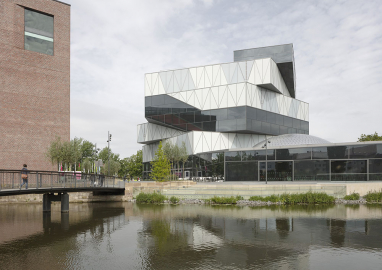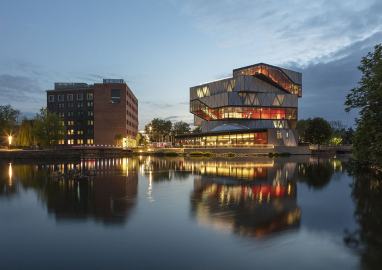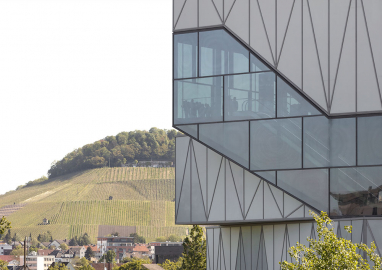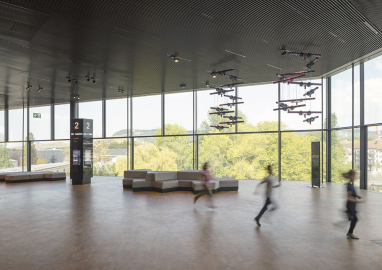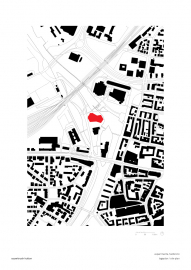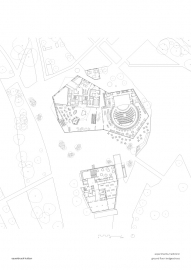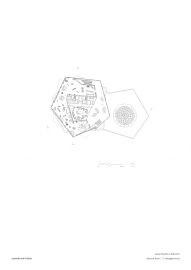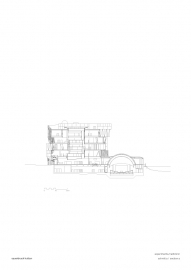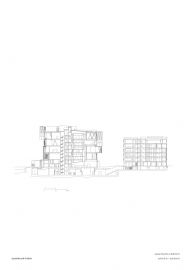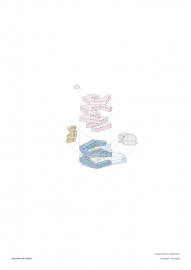Experimenta Science Center
Extension of a science centre with spaces for exhibition and education, organized along a helical steel construction that makes the architecture part of the visitor's experience.
This emblematic building stands at the centre of Heilbronn, on an island in the River Neckar. It is conceived as a helical sequence of spaces offering an experience that is finely choreographed between the interior of the building and the surrounding landscape.
The new building forms an ensemble with a converted warehouse, framing a small piazza from where visitors enter the museum. Passing through the spacious foyer, they move upwards along the helix. This takes them through four levels containing themed exhibition spaces that focus on scientific and technological subjects. For young visitors there are interactive media installations, where they can apply what they have just learned to specific tasks.
The themed sections on each floor are offset in horseshoe form around the core of the building and a full-height atrium, into which pods are inserted that contain interactive stations. Finally, the helix brings visitors out onto a landscaped roof terrace that offers a panorama of the entire Neckar Valley. Also located on the roof are an astronomical observatory and an auditorium for experimental theatre. An alternative route leads to the basement, where the 360° Science Dome cinema and spaces for temporary exhibitions are located.
The Experimenta building is like a toolbox whose architecture reinforces the educational purpose of the science centre. It presents views out into the distance, while also leading the eye inwards, right down to a microscopic scale.
The extension of the Experimenta is a technical building made of steel and glass. Its reflective outer skin consists of large rectangular panes of transparent glass and triangular façade panels with opaque glass in white and light grey. Through the transparent panes, one looks in and recognises a continuous space that is diagonally connected across the floor levels. The interconnected areas form a large spiral of space: The geometry of this building is the result of the spiral movement. The visitor moves in a large steel construction and looks again and again at generous panoramas of the surrounding landscape.
The construction itself is to a certain extent experimental. It consists of stacked, storey-high truss girders, from which the transparent storeys of the spiral-shaped access path are suspended on thin poles. In the core of the supporting structure hang glass cubes, which like crystalline cocoons form the protected centre of the spiral movement. Their materiality is robust and simple. Concrete, steel and glass are the predominant materials that form the framework for the views into the open air and the background for the experience of the exhibitions.

